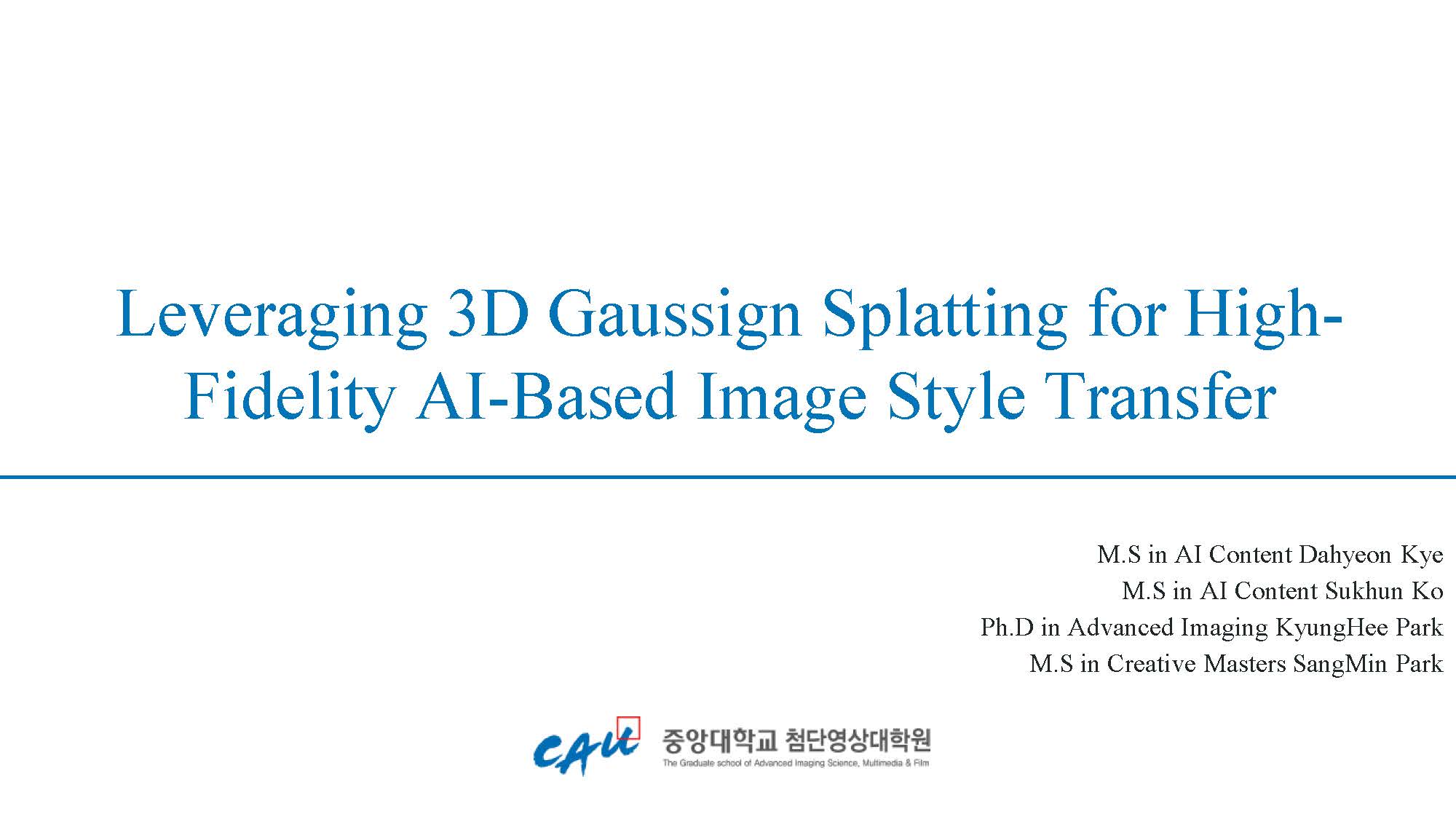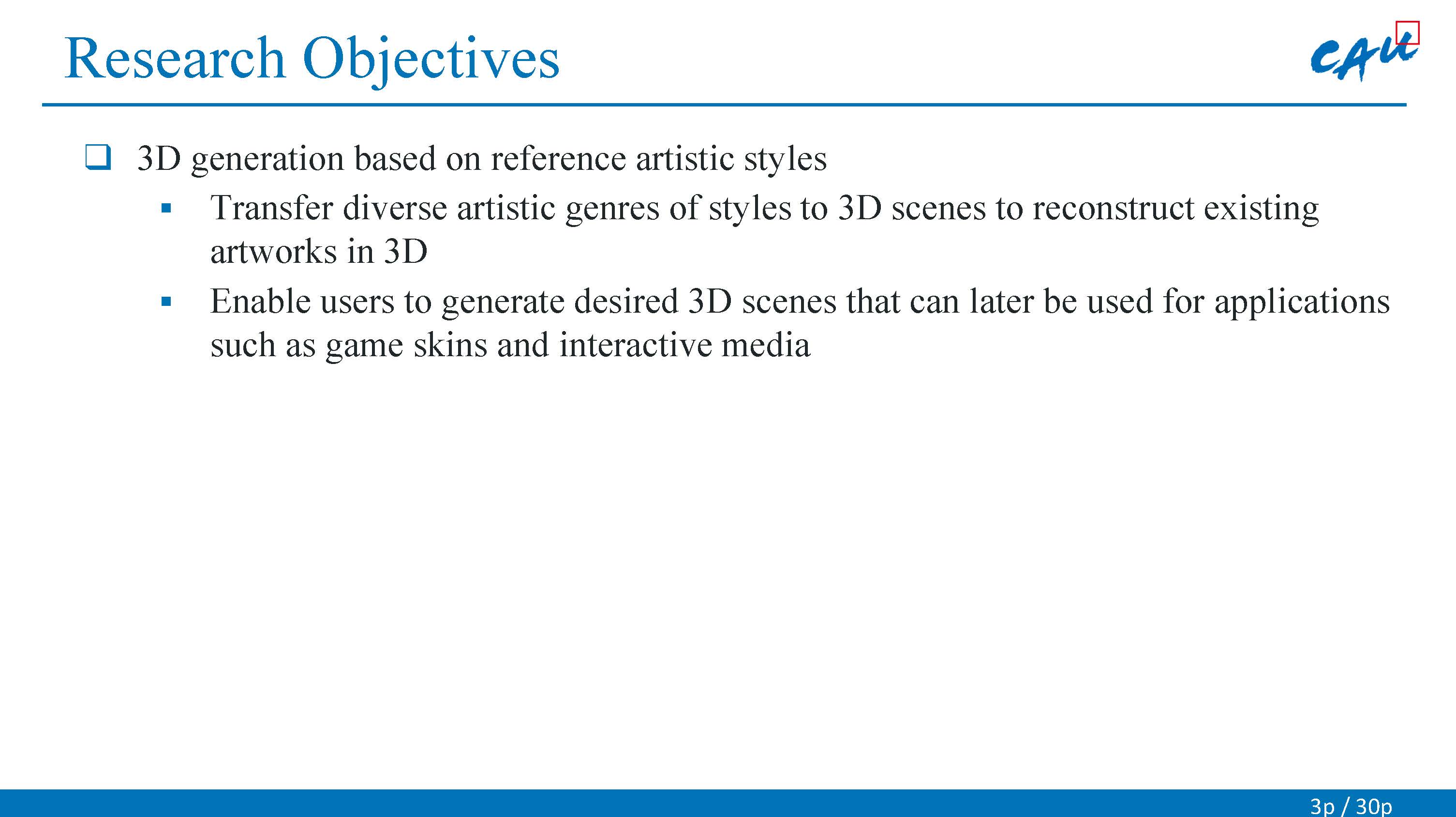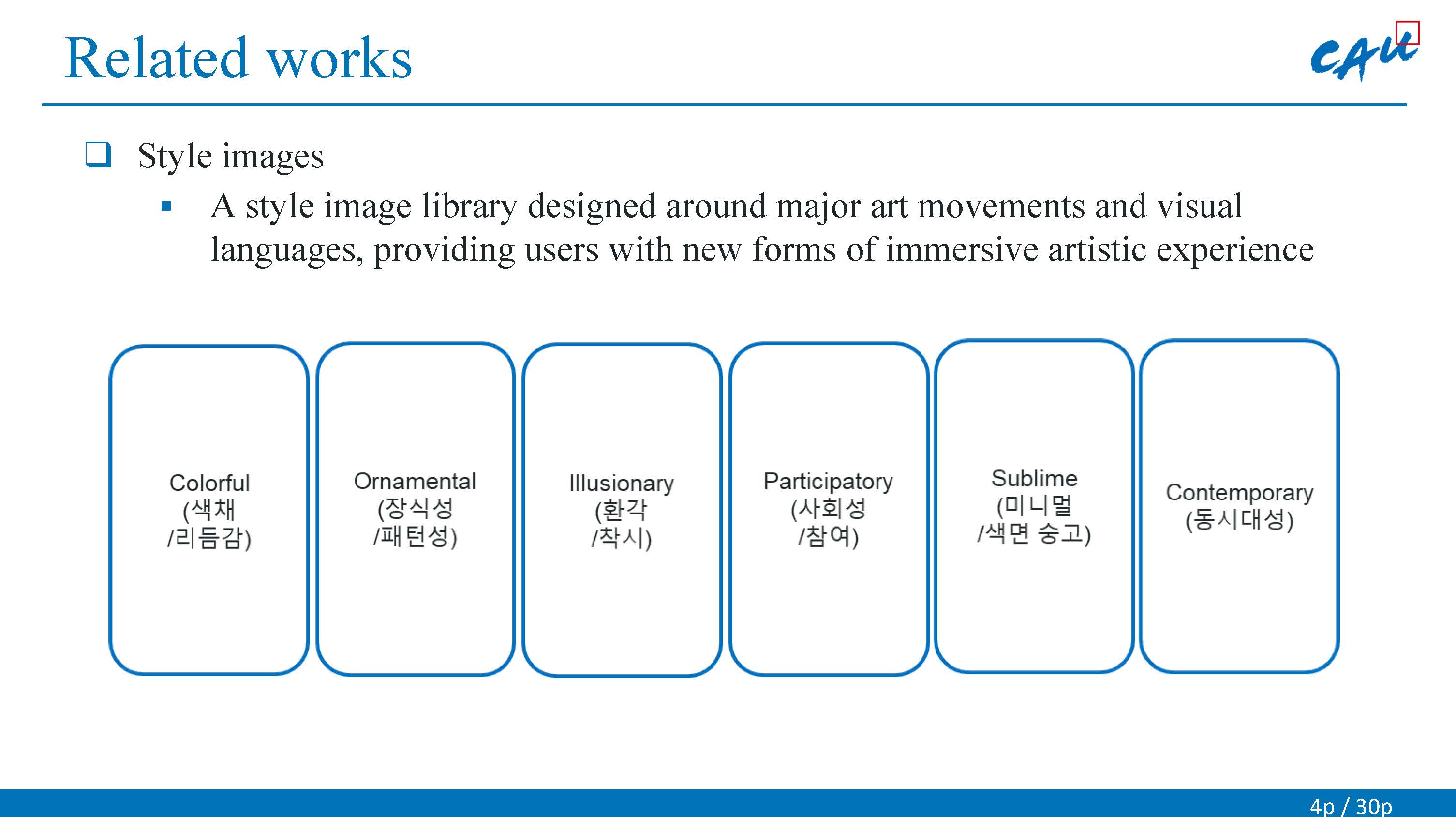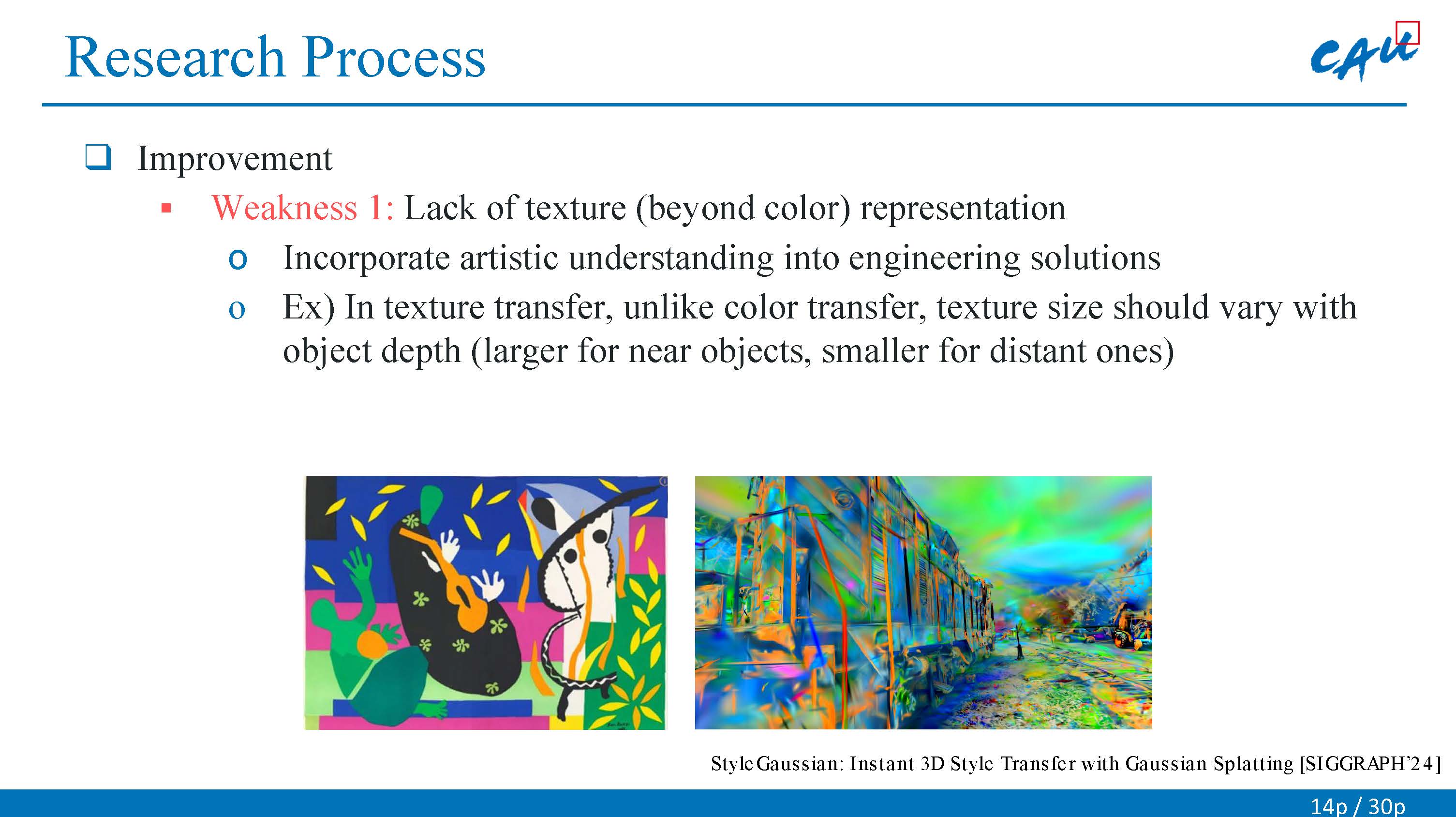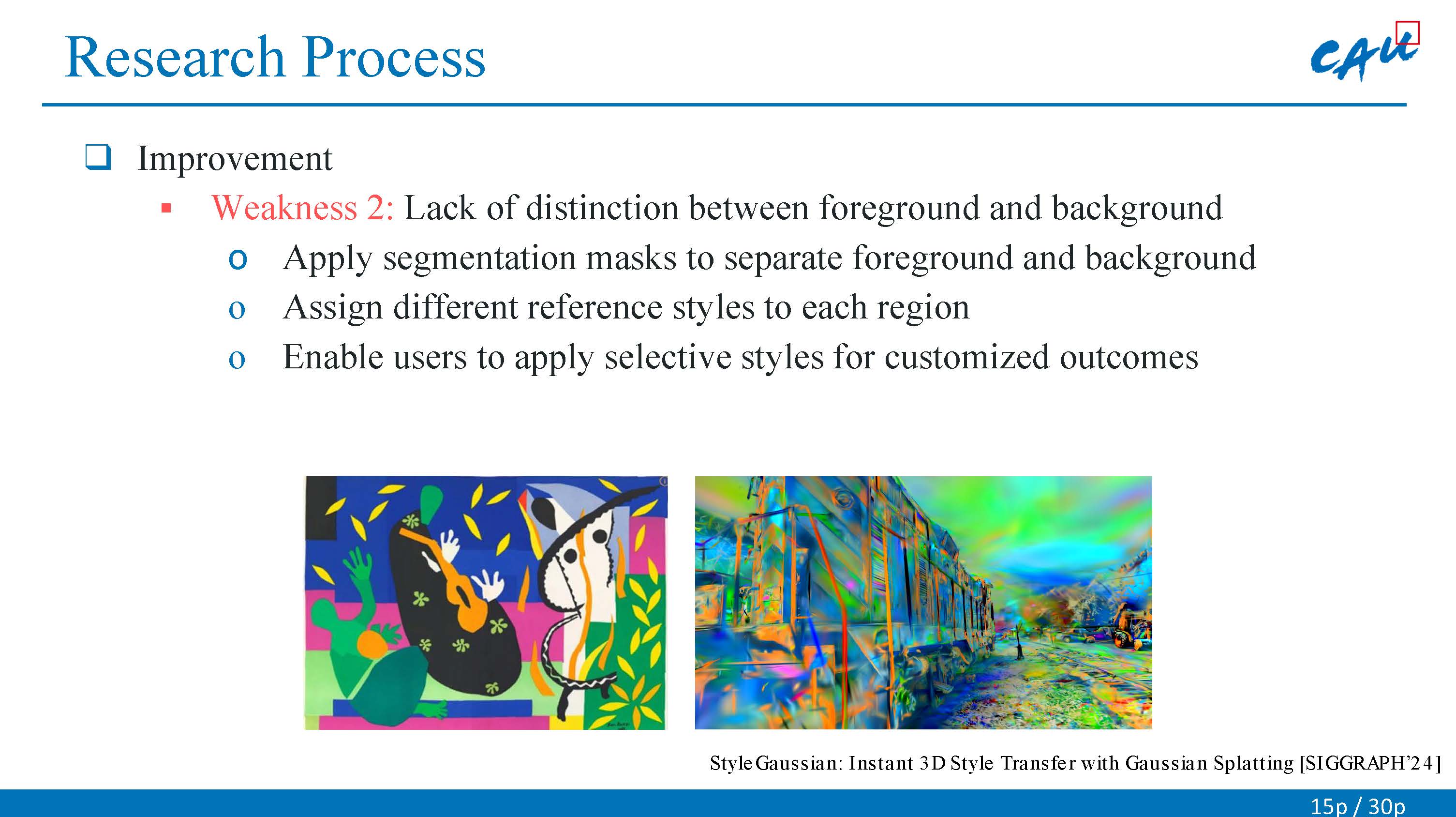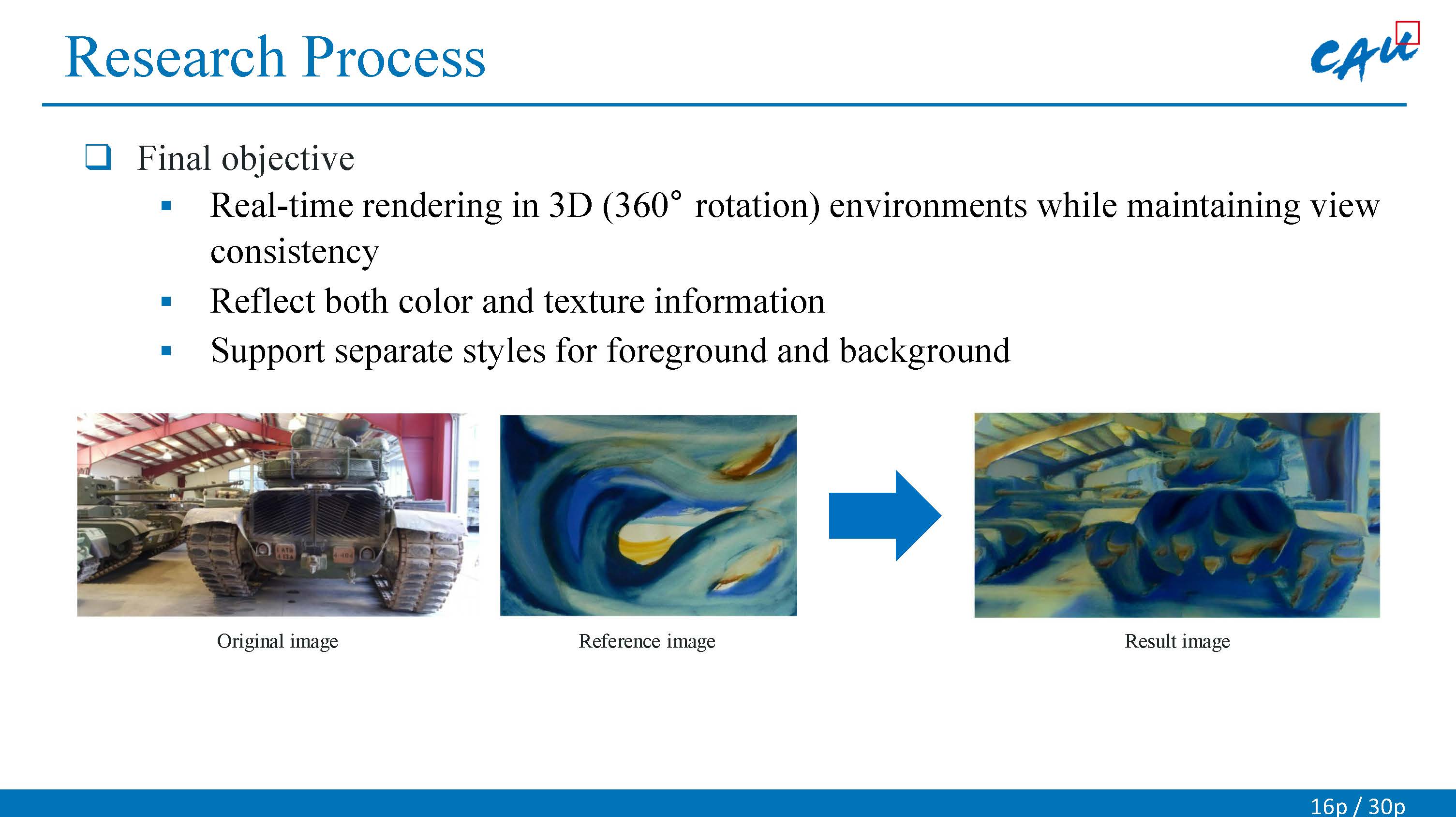Leveraging 3D Gaussian Splatting for High-Fidelity AI-Based Image Style Transfer
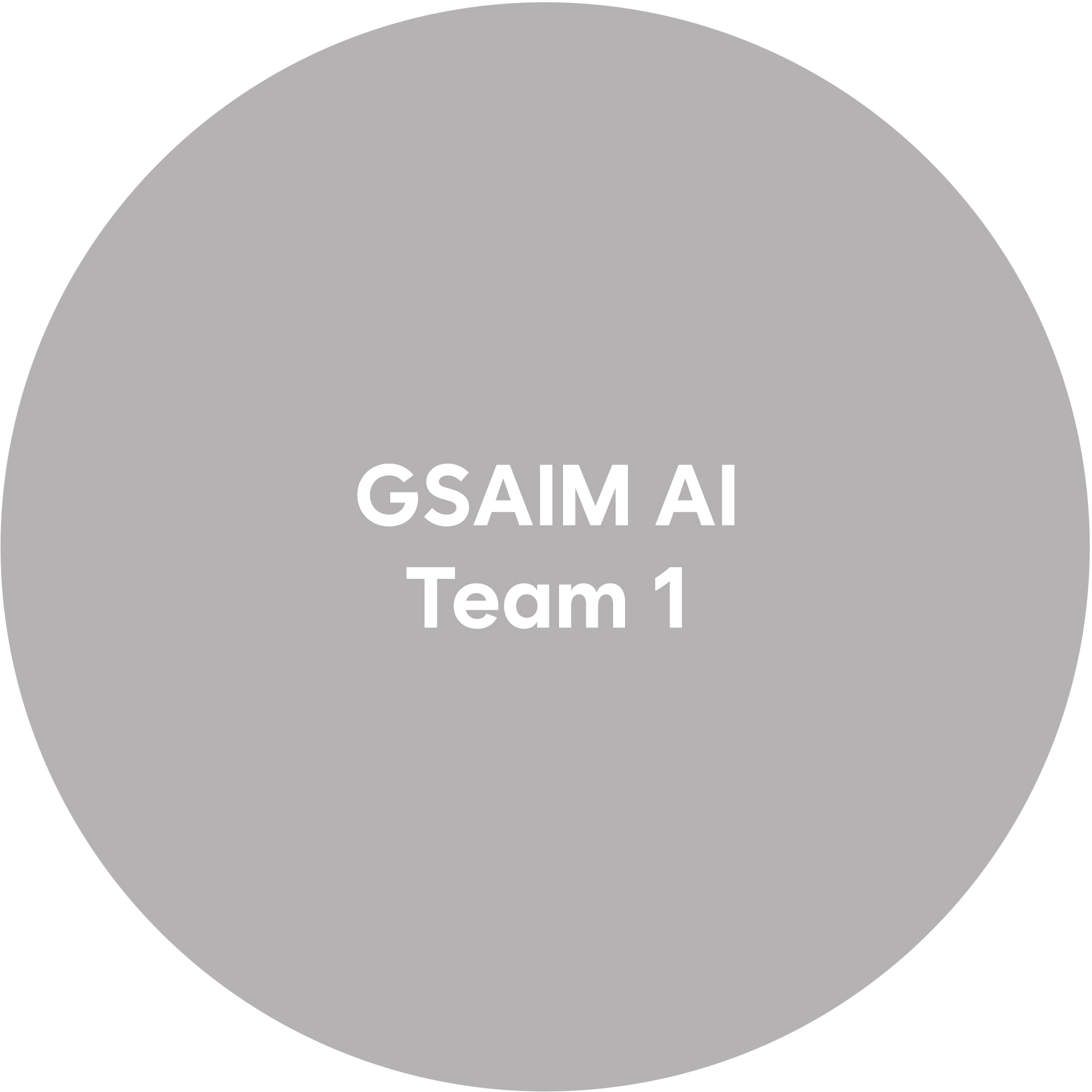
GSAIM AI Team 1
| Sukhun Ko, Dahyeon Kye, Kyunghee Park, Sangmin Park | Korea
[Team 1]
Sukhun Ko is an M.S. student in his first year at the Graduate School of Advanced Imaging Science, Chung-Ang University, currently conducting research on 3D/4D style transfer. His recent work includes FLAIR — a frequency- and locality-aware INR framework — which is under review prior to publication. His primary research interests include video restoration and diffusion models, and his long-term goal is to extend this line of research toward both academic contribution and real-world deployment.research toward both academic contribution and real-world deployment.
Dahyeon Kye is a second-year M.S. student at the Graduate School of Advanced Imaging Science, Chung-Ang University, specializing in video frame interpolation and generative models. She is the first author of “AceVFI: A Comprehensive Survey of Advances in Video Frame Interpolation,” which is currently under peer review, and her current research focus is diffusion-based image morphing.
Kyunghee Park received her B.F.A. in Sculpture from Seoul National University and M.F.A. degrees in Fine Art from UCL Slade School of Fine Art and the University of the Arts London (UAL). She is currently pursuing the Ph.D. degree in Art and Technology at Chung-Ang University, Seoul, Korea. Her research interests include digital sculpturality, responsive perception, and the aesthetics of generative art. In addition to her academic research, she has curated several media-art exhibitions exploring the convergence of artistic practice and technology.
Sangmin Park is a senior supervisor at CJ ENM with extensive experience in building motion-capture and rigging pipelines for film and TV animation. He has led and supervised major productions including Robot Train, Rainbow Ruby, and the cinematic cutscenes for A3: Still Alive.
Gaussian Splatting–based 3D representations enable high-quality real-time rendering compared to conventional NeRF approaches, and we leverage this representation as a prior for 3D style transfer. We conducted experiments by categorizing styles based on art-historical knowledge, and the results demonstrate that our method effectively alleviates the common issue of geometry distortion or degradation in stylized 3D outputs. Consequently, the proposed approach preserves geometric integrity while more faithfully injecting artistic style information during the stylization process.



